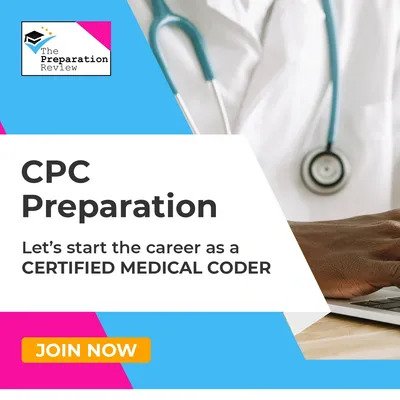Medical Coding Training Course - CPC Exam

Medical Coding Training Course- CPC
Structure and Course Information
The CPC exam aims to check a coder’s command over the entire medical coding process that includes the medical terminology, code sets and more.
The exam covers all the important subject areas that include radiology, anesthesia, medicine, etc.
- 100 Multiple Choice Questions (Proctored)
- 4 Hours To Finish The Exam
- Open Code Book (Manuals - CPT®, ICD-10-CM & HCPCS Level II)
- Online Proctored / Physical Location Proctored
The CPC examination consists of questions regarding the correct application of CPT, HCPCS Level II procedure and supply codes and ICD-10-CM diagnosis codes used for coding and billing professional medical services to insurance companies. Examinee’s must also demonstrate knowledge on proper modifier use, coding guidelines and regulatory rules.
The CPC examination consists of questions regarding the correct application of CPT®, HCPCS Level II procedure and supply codes, and ICD-10-CM diagnosis codes used for coding and billing professional medical services to insurance companies.
Get a Free Consultation
Talk to our team
Course Features
- Total duration: 80 hours (40 hrs Instruction + 40 hrs Testing).
- Class Duration: 3 hours per class.
- Online study resources/materials.
- Assistance on Booking the Exams.
- Trainer: Certified Medical Coder
- Online Preparation using through Microsoft Teams.
Trainer Profile
- Bachelor of Ayurvedic Medicine and Surgery
- Certificate in Gynecology & Obstetrics
- MBA in Healthcare Management
- Certified Medical Coder (CPC)
- Member of American Academy of Professional Coders
Reasons to Enroll Online
1. Recording of the class to review again & again before the final exam.
2. Experienced Instructors to teach Tips & Tricks of Coding.
3. Satisfying duration of teaching and testing.
4. Online Interactive Session.
5. More Diagnostic Tests.
6. Learn Thru PPT presentation (Charts & Diagrams).
7. 3D Anatomy & 3D Paint (Basically on updated Software).
8. Completion E-Certificate.

The CPC Exam Breakdown
The CPC Exam Breakdown Passing the CPC exam requires you to correctly answer a minimum of 70 questions from the series below. The exam questions, however, will not be identified or sorted by the series to which they pertain. The CPC test will rely on a level of understanding that enables you to identify the series.
The 10,000 Series CPT® part of the exam will consists of six questions related to surgical procedures performed on the integumentary system, which includes skin, subcutaneous, and accessory structures, as well as nails, pilonidal cysts, repairs, destruction, and breast.
The six questions in the 20000 Series CPT® will home in on surgical procedures performed on the musculoskeletal system from head to toe. Specifically, these areas include the head, neck, back and flank, spine, abdomen, shoulder, arm, hand and fingers, pelvis and hip, leg, foot and toes.
Six questions covering the 30000 Series CPT® focus on surgical procedures performed on the respiratory system, surgical procedures performed on the cardiovascular system, surgical procedures performed on the hemic and lymphatic systems, and surgical procedures performed on the mediastinum and diaphragm.
Your knowledge of the 40000 Series CPT® will be tested with six questions targeting surgical procedures performed on the digestive system, which will focus on these areas: lips, mouth, palate and uvula, salivary gland and ducts, pharynx, adenoids, and tonsils, esophagus, stomach, intestines, appendix, rectum, anus, liver, biliary tract, pancreas, abdomen, peritoneum, and omentum.
(Note: New Section) Cases
Ten cases with one multiple choice question per case will test your ability to accurately code medical record documentation using CPT®, ICD-10-CM, and HCPCS Level II. The cases will cover 10000 series, 20000 series, 30000 series, 40000 series, 50000 series, 60000 series, medicine, anesthesia, radiology, pathology and laboratory, and evaluation and management services. Medical terminology, anatomy, compliance, and regulatory information may also be tested in the cases.
Disclaimer
CPT® are trademarks registered and/or owned by the AMA, which was not involved in the production of, and does not endorse, this site.
Six E/M questions will assess your coding proficiency related to place and level of services, such as office/other outpatient, hospital observation, hospital inpatient, consultations, emergency department, critical care, nursing facility, domiciliary and rest homes, and home services. It will also include questions directed at preventive medicine, non-face-to-face services, neonatal and pediatric critical care, intensive care, prolonged services, chronic care, transitional care, case management, and care plan oversight.
The six questions in this section of the CPC test will focus on both diagnostic and interventional radiology, including diagnostic ultrasound, radiologic guidance, mammography, bone and joint studies, radiation oncology, and nuclear medicine.
